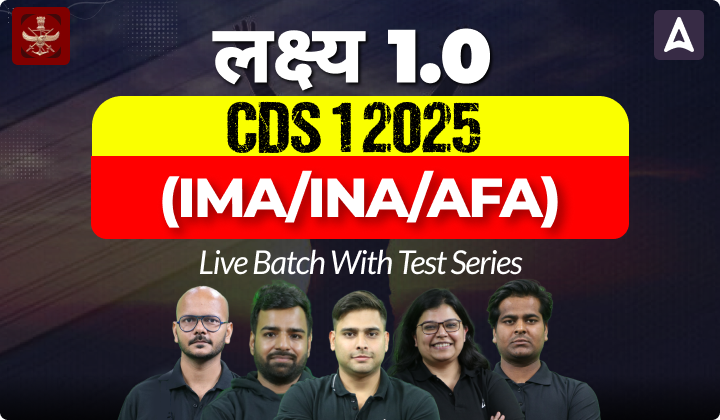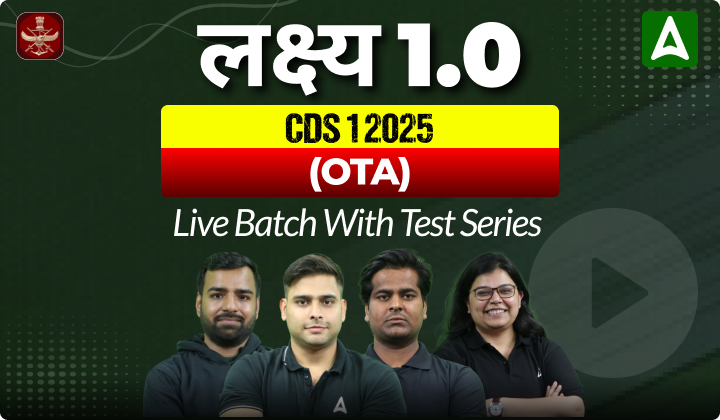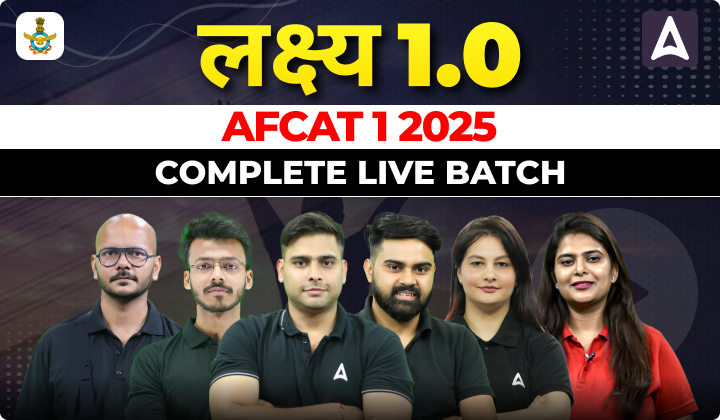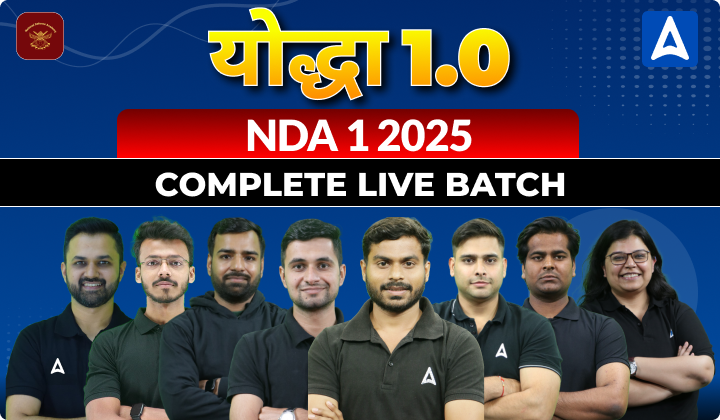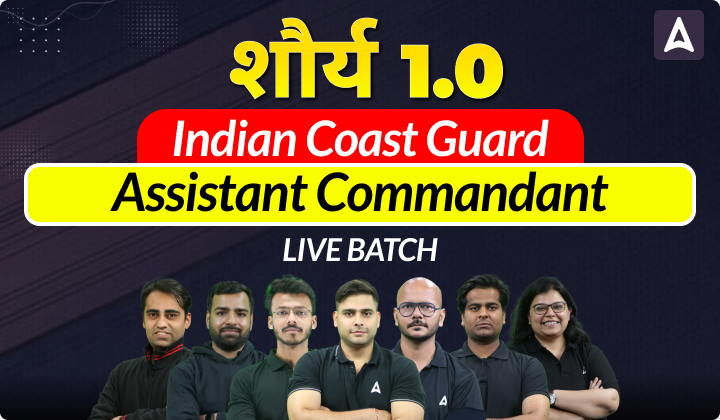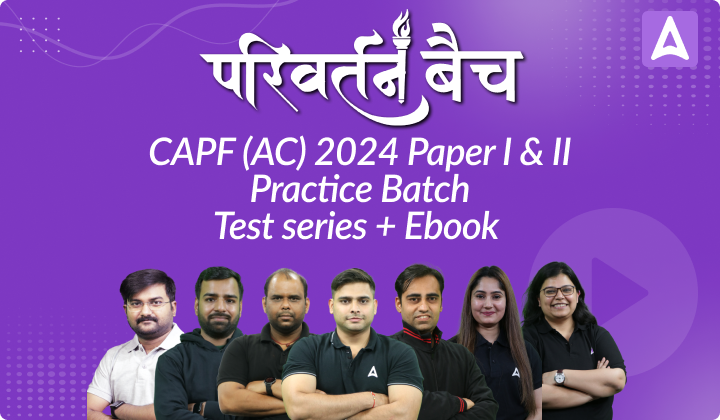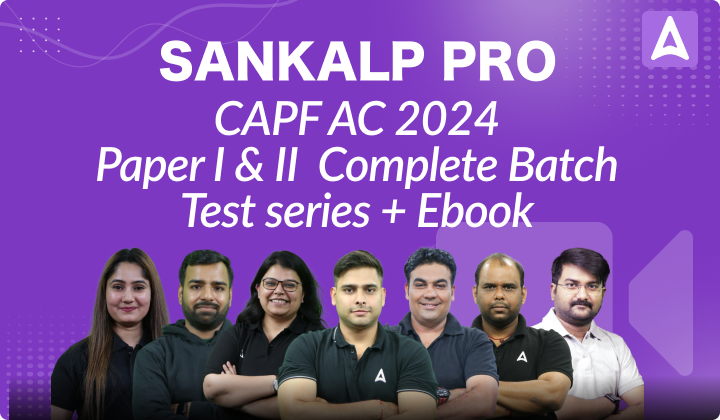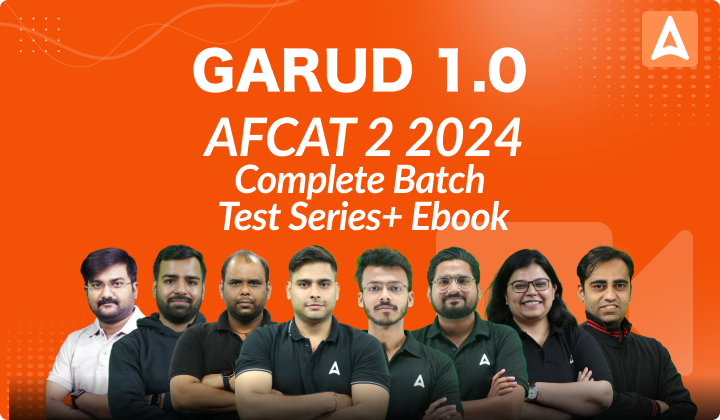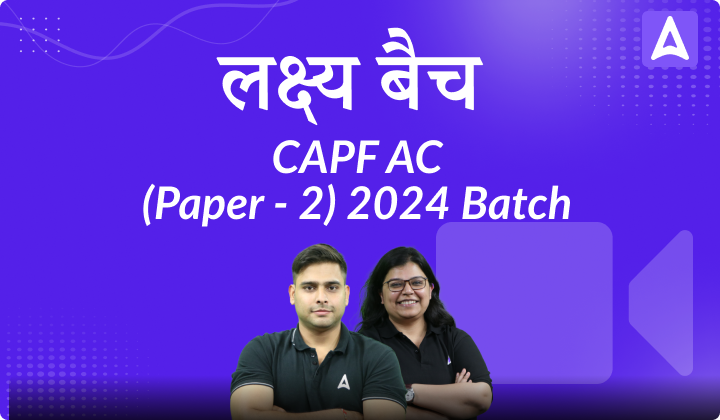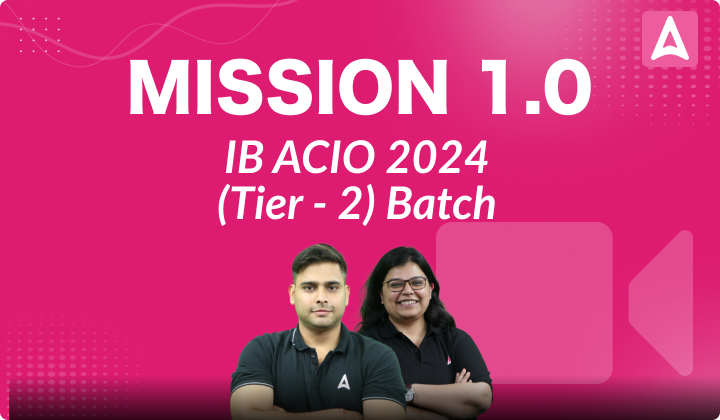Indian Coast Guard Yantrik Syllabus
India Coast Guard Recruitment: Indian Coast Guard (ICG) has released the notification for the recruitment post of Navik (Domestic Branch- DB, General Duty- GD) and Yantrik for 01/2023 batch. Many of you might be interested for the recruitment so here we have provided the complete syllabus for Indian Coast Guard.
The Exam consist of four stages, the first stage is the Computer based online exam so here we will look at the syllabus of different sections for the Indian Coast Guard Yantrik Navik recruitment process.
Check: Coast Guard Yantrik Model Question Paper
Indian Coast guard Exam Pattern
Before diving into the vast syllabus of Indian Coast Guard yantrik Navik Syllbus lets look at the examination pattern
Stage1
Stage one includes written examination, there are different sections in the written exam for different posts It is compulsory to pass each section separately. The passing marks differ according to the category of candidate. The candidate has to take following tests depending on post applied:-
| S. No. | Post Applied | Written test |
| 1. | Navik GD | Section I |
| 2. | Navik DB | Section (I+II) |
| 3. | Yantric (Electricals) | Section (I+III) |
| 4. | Yantrik (Electronic) | Section (I+IV) |
| 5. | Yantrik (Mechanical) | Section (I+V) |
Written Examination
In each section different topics will be asked. The table given below summaries all the sections and their details.
| S. No. | Section Name | Exam Details | Subjects | Syllabus |
| 1. | Section I | Maximum Marks – 60 Time – 45 mins. Total no. of Questions – 60 |
Maths – 20 Science – 10 English – 15 Reasoning–10 GK – 5 |
Class 10thSyllabus |
| 2. | Section II | Maximum Marks – 50 Time – 30 mins. Total no. of Questions – 50 |
Maths – 25 Physics– 25 |
Class 12thMaths& Physics Syllabus |
| 3. | Section III | Maximum Marks – 50 Time – 30 mins. Total no. of Questions – 50 |
Electrical Engineering – 50 |
Diploma Level Electrical Engineering syllabus |
| 4. | Section IV | Maximum Marks – 50 Time – 30 mins. Total no. of Questions – 50 |
Electronics Engineering – 50 |
Diploma Level Electronics Engineering syllabus |
| 5. | Section V | Maximum Marks – 50 Time – 30 mins. Total no. of Questions – 50 |
Mechanical Engineering – 50 |
Diploma Level Mechanical Engineering syllabus |
Stage 2
The students who clear CBT of stage 1 will be called for stage 2 depending on the vacancies and ratio decided by ICG, the stage 2 will take 1 or 2 days and candidates will be tested for physical fitness followed by Document verification and Initial medical examination.
The Physical Fitness Test includes Running 1.6 km ,20 Squat ups and 10 push-ups, all the tree tasks are to be done in continuation.
Stage 3
After completion of stage 1 and 2 an all India level merit list will be prepared and the selected candidates will be called for Stage 3. The stage 3 will last for 2 to 3 days and will include following tasks
- Document Verification
- Final medicals at INS Chilka
- Submission of Original Documents
- Police Verification
Stage 4
The stage 4 is the final stage of recruitment process, candidates making it in stage 3 will be provisionally shortlisted for training at INS Chilka given that they submit all their documents for verification.
Indian Coast Guard Yantrik Syllabus
Section – I
Science Syllabus
Mathematics Syllabus
Mathematical Simplification, Ratio and Proportion, Algebric Identities, Linear Equations and Polynomials, Simultaneous Equations, Basic Trigonometry, Simple Mensuration, Geometry, Measures of Central Tendency (Average, Median and Mode),Interest, Profit, Loss and Percentage, Work, Time, Speed and Distance.
English Syllabus
Passage, Preposition, Correction of sentences, Change active to passive/passive to active voice. Change direct to indirect/indirect to direct, Verbs/Tense/Non Finites, Punctuation. Substituting phrasal verbs for expression, Synonyms and Antonyms, Meanings of difficult words. Use of adjectives, Compound preposition.
General Awareness Syllabus
Geography: Soil, Rivers, Mountains, Ports, Inland, Harbours, Culture and Religion, Freedom Movement, Important National Facts about India, Heritage, Arts and Dance, History, Defence, Wars and Neighbours, Awards, Authors. Discoveries, Diseases and Nutrition. Current Affairs, Languages, Capitals and Currencies, Common Names, Full Forms and Abbreviations, Eminent Personalities
National Bird/Animal/Sport/Flower/Anthem/ Song/ Flag/Mountains
Sports: Championships / Winners /Terms / Number of Players
Reasoning Syllabus
Spatial, Numerical Reasoning & Associative Ability, Sequences, Spellings Unscrambling, Coding and Decoding
Section – II
Physics and Mathematics of 10+2 will be asked in this Section.
Coast Guard Navik DB Syllabus
Section-I
Coast guard navik DB syllabus is same as provided above.
Section III
| Subject: Electrical Diploma Engineering |
|---|
| Basic concepts- Concepts of resistance, inductance, capacitance, and various factors affecting them. Concepts of current, voltage, power, energy and their units. |
| Circuit law- Kirchhoff‘s law, Simple Circuit solution using network theorems. |
| Magnetic Circuit- Concepts of flux, EMF, reluctance, Different kinds of magnetic materials, Magnetic calculations for conductors of different configuration e.g. straight, circular, solenoidal, etc. Electromagnetic induction, self and mutual induction. |
| AC Fundamentals- Instantaneous, peak, R.M.S. and average values of alternating waves, Representation of sinusoidal wave form, simple series and parallel AC Circuits consisting of R.L. and C, Resonance, Tank Circuit. Poly Phase system – star and delta connection, 3 phase power, DC and sinusoidal response of R-Land R-C circuit. |
| Measurement and measuring instruments- Measurement of power (1 phase and 3 phase, both active and re-active) and energy, 2 wattmeter method of 3 phase power measurement. Measurement of frequency and phase angle. Ammeter and voltmeter (both moving oil and moving iron type), extension of range wattmeter, Multimeters, Megger, Energy meter AC Bridges. Use of CRO, Signal Generator, CT, PT and their uses. Earth Fault detection. |
| Electrical Machines- (a) D.C. Machine – Construction, Basic Principles of D.C. motors generators and their characteristics, speed control and starting of D.C. Motors. Method of braking motor, Losses and efficiency of D.C. Machines. (b) 1 phase and 3 phase transformers – Construction, Principles of operation, equivalent circuit, voltage regulation, O.C. and S.C. Tests, Losses and efficiency. Effect of voltage, frequency and wave form on losses. Parallel operation of 1 phase /3 phase transformers. Auto transformers. (c) 3 phase induction motors, rotating magnetic field, principle of operation, equivalent circuit, torque-speed characteristics, starting and speed control of 3 phase induction motors. Methods of braking, effect of voltage and frequency variation on torque speed characteristics, Fractional Kilowatt Motors and Single Phase Induction Motors: Characteristics and applications. |
| Synchronous Machines- Generation of 3-phase e.m.f. armature reaction, voltage regulation, parallel operation of two alternators, synchronizing, control of active and reactive power. Starting and applications of synchronous motors. |
| Generation, Transmission and Distribution- Different types of power stations, Load factor, diversity factor, demand factor, cost of generation, inter-connection of power stations. Power factor improvement, various types of tariffs, types of faults, short circuit current for symmetrical faults. Switchgears and Protection-Rating of circuit breakers, Principles of arc extinction by oil and air, H.R.C. Fuses, Protection against earth leakage / over current, etc. Buchholz relay, Merz-Price system of protection of generators & transformers, protection of feeders and bus bars. Lightning arresters, various transmission and distribution system, comparison of conductor materials, efficiency of different system. Cable – Different type of cables, cable rating and derating factor. |
| Estimation And Costing- Estimation of lighting scheme, electric installation of machines and relevant IE rules. Earthing practices and IE Rules. |
| Utilization of Electrical Energy- Illumination, Electric heating, Electric welding, Electroplating, Electric drives and motors. |
| Basic Electronics- Working of various electronic devices e.g. PN Junction diodes, Transistors (NPN and PNP type), BJT and JFET. Simple circuits using these devices. |
Section IV
| Subject: Electronics Diploma Engineering |
|---|
| Basic concepts- Concepts of resistance, inductance, capacitance, and various factors affecting them. Concepts of current, voltage, power, energy and their units. |
| Electronic Components & Materials- Conductors, Semi conductor& Insulators; Magnetic materials; Jointing & Cleaning materials for U/G copper cable & OFC; Cells and Batteries (chargeable and non chargeable); Relays, Switches, MCB & Connectors. |
| Electronic Devices and Circuits- PN Junction diodes, thyristor; Diode and triode circuits; Junction Transistors; Amplifiers; Oscillator; Multivibrator, counters; Rectifiers; Inverter and UPS. |
| Digital Electronics- Number System & Binary codes; Boolean Algebra & Logic gates; Combinational & Sequential logic circuits; A/D & D/A converter, counters; Memories. |
| Linear Integrated Circuit- Introduction to operational Amplifier; Linear applications; Non Linear applications; Voltage regulators; Timers; Phase lock loop. |
| Microprocessor and Microcontroller- Introduction to microprocessor, 8085 microprocessor working; Assembly Language programming; Peripherals & other microprocessors; Microcontrollers. |
| Electronic Measurements- Measuring systems; Basic principles of measurement; Range Extension methods; Cathode ray oscilloscope, LCD, LED panel; Transducers. |
| Communication Engineering- Introduction to communication; Modulation techniques; Multiplexing Techniques; Wave Propagation, Transmission line characteristics, OFC; Fundamentals of Public Address systems, Electronic exchange, Radar, Cellular and Satellite Communication. |
| Data communication and Network- Introduction to data communication; Hardware and interface; Introduction to Networks and Networking devices; Local Area Network and Wide area network; Internet working. |
| Computer Programming- Programming concepts; Fundamentals of ‘C’ and C ++; Operators in ‘C’ and C ++; Control Statements; Functions, Array String & Pointers, File Structure; Data Structure and DBMS. |
| Basic Electrical Engineering- DC Circuits; AC fundamentals; Magnetic, Thermal and Chemical effects of Electric current; Earthing – Installation, Maintenance, Testing. |
Section-V
Subject: Mechanical Engineering Diploma
Engineering Mechanics- Resolution of forces, Equilibrium and Equilibrant, parallelogram law of forces, triangle law of forces, polygon law of forces and Lami’s theorem, couple and moment of a couple, condition for equilibrium of rigid body subjected to number of coplanar non-concurrent forces, definition of static friction, dynamic friction, derivation of limiting angle of friction and angle of repose, resolution of forces considering friction when a body moves on horizontal plane and inclined plane, calculation of moment of inertia and radius of gyration of : (a) I-Section (b) channel section (c) T-Section (d) L-Section (Equal & unequal lengths) (e) Z-Section (f) Built up sections (simple cases only), Newton’s laws of motion (without derivation), motion of projectile, D’Alembert’s principle, definition law of conservation of energy, law of conservation of momentum.
Material Science- Mechanical properties of engineering materials – tensile strength, compressive strength, ductility, malleability, hardness, toughness, brittleness, impact strength, fatigue, creep resistance. Classification of steels, mild steel and alloy steels. Importance of heat treatment. Heat treatment processes – annealing, normalizing, hardening, tempering, carburizing, nitriding and cyaniding3Strength of Materials- Stress, strain, stress strain diagram, factor of safety, thermal stresses, strain energy, proof resilience and modules of resilience. Shear force and bending moment diagram – cant leaver beam, simply supported beam, continuous beam, fixed beam. Torsion in shafts and springs, thin cylinder shells.
Machining– Working principle of lathe. Types of lathes – Engine lathe – construction details and specifications. Nomenclature of single point cutting tool, geometry, tool signature, functions of tool angles. General and special operations – (Turning, facing, taper turning thread cutting, knurling, forming, drilling, boring, reaming, key way cutting), cutting fluids, coolants and lubricants. Introduction to shaper, slotter, plainer, broaching, milling and manufacture of gears, heat treatment process applied to gears.
Welding– Welding – Introduction, classification of welding processes, advantages and limitations of welding, principles of arc welding, arc welding equipment, choice of electrodes for different metals, principle of gas (oxy-acetylene) welding, equipment of gas welding, welding procedures (arc & gas), soldering and brazing techniques, types and applications of solders and fluxes, various flame cutting processes, advantages and limitations of flame cutting, defects in welding, testing and inspection modern welding methods, (submerged, CO2, atomic – hydrogen, ultrasonic welding), brief description of MIG & TIG welding.
Grinding & Finishing Process– Principles of metal removal by grinding, abrasives, natural and artificial, bonds and binding processes, vitrified, silicate, shellac rubber, grinding machines, classification: cylindrical, surface, tool & cutter grinding machine, construction details, relative merits, principles of centreless grinding, advantages & limitations of centreless grinding work, holding devices, wheel maintenance, balancing of wheels, coolants used, finishing by grinding, honing, lapping, super finishing, electroplating, basic principles – plating metals, applications, hot dipping, galvanizing tin coating, parkerising, anodizing, metal spraying, wire process, powder process and applications, organic coatings, oil base paint, lacquer base enamels, bituminous paints, rubber base coating.
Metrology- Linear measurement – Slip gauges and dial indicators, angle measurements, bevel protractor, sine bar, angle slip gauges, comparators (a) mechanical (b) electrical (c) optical (d) pneumatic. Measurement of surface roughness; methods of measurements by comparison, tracer instruments and by interferometry, collimators, measuring microscope, interferometer, inspection of machine parts using the concepts of shadow projection and profile projection.
Fluid Mechanics & Hydraulic Machinery– Properties of fluid, density, specific weight, specific gravity, viscosity, surface tension, compressibility capillarity, Pascal’s law, measurement of pressures, concept of buoyancy. Concept of Reynold’s number, pressure, potential and kinetic energy of liquids, total energy, laws of conservation, mass, energy and momentum, velocity of liquids and discharge, Bernoulli’s equation and assumptions, venturimeters, pitottube, current meters. Working principle & constructional details of centrifugal pump, efficiencies – manometric efficiency, volumetric efficiency, mechanical efficiency and overall efficiency, cavitation and its effect, working principle of jet & submersible pumps with line diagrams.
Industrial Management– Job analysis, motivation, different theories, satisfaction, performance reward systems, production, planning and control, relation with other departments, routing, scheduling, dispatching, PERT and CPM, simple problems. Materials in industry, inventory control model, ABC Analysis, Safety stock, re-order, level, economic ordering quantity, break even analysis, stores layout, stores equipment, stores records, purchasing procedures, purchase records, Bin card, Cardex, Material handling, Manual lifting, hoist, cranes, conveyors, trucks, fork trucks.
Thermal Engineering- Laws of thermo dynamics, conversion of heat into work vice versa , laws of perfect gases, thermo dynamic processes – isochoric, isobaric, isothermal hyperbolic, isentropic, polytrophic and throttling, modes of heat transfer, thermal conductivity, convective heat transfer coefficient, Stefan Boltzman law by radiation and overall heat transfer coefficient. Air standards cycles – Carnot cycle, Otto cycle, Diesel cycle, construction and working of internal combustion engines, comparison of diesel engine and petrol engine. Systems of internal combustion engine, performance of internal combustion engines. Air compressors their cycles refrigeration cycles, principle of a refrigeration plant
Now keep yourself updated with Latest Defence Jobs and News 24×7 Download ADDA247 App Now! CLICK HERE

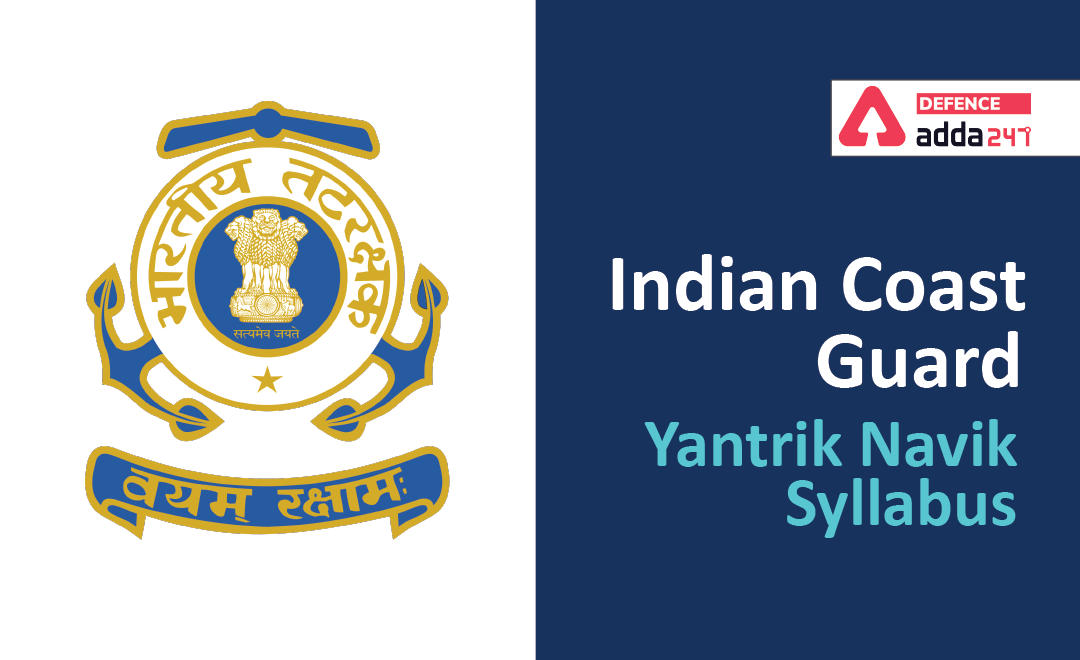
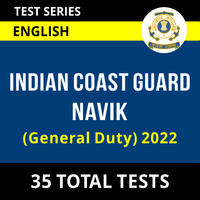

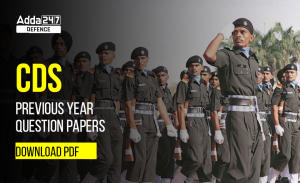 CDS Previous Year Question Papers, Downl...
CDS Previous Year Question Papers, Downl...
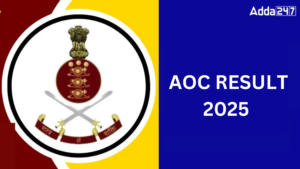 AOC Result 2025 Out, Download Link Activ...
AOC Result 2025 Out, Download Link Activ...
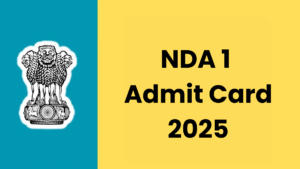 NDA 1 Admit Card 2025 Out, Download NDA ...
NDA 1 Admit Card 2025 Out, Download NDA ...

